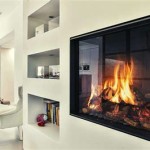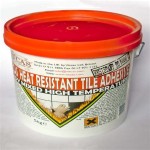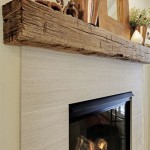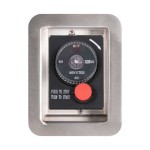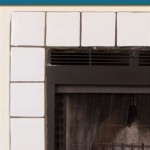Gas Burning Log Fireplaces: A Comprehensive Overview
Gas burning log fireplaces offer a convenient and aesthetically pleasing alternative to traditional wood-burning fireplaces. They provide the ambiance of a real fire without the labor-intensive processes of gathering, storing, and burning wood. These fireplaces operate by burning natural gas or propane, creating flames that mimic the look of a wood fire using ceramic or refractory logs. This article aims to provide a comprehensive understanding of gas burning log fireplaces, covering their types, benefits, installation considerations, maintenance requirements, and safety aspects.
Types of Gas Burning Log Fireplaces
Gas burning log fireplaces can be broadly categorized into two main types: vented and ventless. The primary distinction lies in how the combustion byproducts are managed and exhausted.
Vented Gas Log Fireplaces: Vented gas log fireplaces are designed to be installed in existing, fully functional wood-burning fireplaces with a working chimney. These systems require a properly sized and unobstructed chimney to safely vent carbon monoxide, water vapor, and other combustion gases to the outside atmosphere. The chimney acts as a crucial component in maintaining safe air quality within the living space. Vented gas logs are typically designed to produce a more realistic flame pattern and greater heat output compared to ventless models because they aren't restricted by the need to burn as cleanly to minimize indoor air pollution. However, much of the heat generated by vented gas logs goes up the chimney, reducing their overall heating efficiency.
Vented gas logs are further divided into two primary categories based on their ignition systems: millivolt and electronic ignition. Millivolt systems use a thermocouple to generate a small electrical current that operates the gas valve. This type of system is relatively simple and reliable, even during power outages. Electronic ignition systems, on the other hand, utilize an electronic spark igniter to light the pilot light and main burner. They often include features like remote control operation and programmable thermostats, offering greater convenience and control.
Ventless Gas Log Fireplaces: Also known as vent-free gas log fireplaces, these systems do not require a chimney or venting system. They are designed to burn fuel very cleanly, minimizing the production of carbon monoxide and other harmful emissions. Ventless fireplaces incorporate oxygen depletion sensors (ODS) that automatically shut off the gas supply if the oxygen level in the room drops below a safe threshold. This safety feature is crucial in preventing carbon monoxide poisoning.
The efficiency of ventless gas log fireplaces is significantly higher than vented models, as nearly all the heat generated is released into the room. This makes them a viable supplemental heating option. However, ventless gas logs are subject to stricter regulations and safety standards due to their potential impact on indoor air quality. They are typically limited in size and BTU output to ensure safe operation. Moreover, they can introduce moisture into the air, which may be a concern in poorly ventilated spaces or homes prone to humidity issues. Some individuals may also find the odor produced by ventless gas logs to be objectionable, although this is usually minimal with properly maintained and adjusted units.
Benefits of Gas Burning Log Fireplaces
Gas burning log fireplaces offer a range of advantages over traditional wood-burning fireplaces, contributing to their increasing popularity among homeowners.
Convenience and Ease of Use: One of the most significant benefits of gas fireplaces is their convenience. They eliminate the need to chop, stack, and store wood. Starting a fire is as simple as turning a switch or pressing a button, and the flames are extinguished just as easily. This makes gas fireplaces ideal for individuals who want the ambiance of a fire without the associated effort and mess. Unlike wood-burning fireplaces, gas fireplaces do not produce ashes, eliminating the need for regular cleaning. They also avoid the risk of embers escaping and causing a fire hazard.
Consistent Heat Output: Gas fireplaces provide a more consistent and predictable heat output compared to wood-burning fireplaces. The flame height and heat level can be easily adjusted using a control knob or remote control, allowing users to maintain a desired temperature in the room. This consistent heat output makes gas fireplaces a more reliable supplemental heating source, particularly during periods of fluctuating temperatures. While vented gas logs are less efficient at directing heat into the room, the consistent and controllable nature of the flame still makes them a beneficial heating option.
Aesthetics and Ambiance: Gas log fireplaces offer a realistic simulation of a wood-burning fire, creating a warm and inviting atmosphere in the living space. Modern gas logs are meticulously crafted to resemble natural wood, with realistic bark textures, char marks, and ember beds. The flickering flames and glowing embers provide a visual appeal that enhances the ambiance of any room. Many gas fireplace models are available with a variety of log styles, flame patterns, and decorative options, allowing homeowners to customize the look to match their personal preferences and interior design.
Installation and Safety Considerations
Proper installation and adherence to safety guidelines are crucial for ensuring the safe and efficient operation of gas burning log fireplaces. Installation should always be performed by a qualified and licensed professional, following all local building codes and manufacturer instructions.
Venting Requirements: Vented gas log fireplaces require a fully functional chimney that is properly sized and in good condition. The chimney should be inspected and cleaned regularly to ensure proper draft and prevent the buildup of creosote or other obstructions. The flue damper must be fully open when the fireplace is in use to allow for proper ventilation of combustion gases. Failure to properly vent a gas log fireplace can result in carbon monoxide poisoning, a potentially fatal hazard.
Clearances and Combustible Materials: Gas fireplaces must be installed with adequate clearances from combustible materials, such as walls, furniture, and draperies. Manufacturer specifications typically outline the minimum clearances required to prevent overheating and fire hazards. It is also important to ensure that the area around the fireplace is free of flammable liquids or gases.
Gas Line Connections: The gas line connection to the fireplace must be performed by a qualified plumber or gas fitter, following all applicable codes and regulations. The gas line should be properly sized to provide adequate gas pressure to the fireplace. A shut-off valve should be installed near the fireplace to allow for easy isolation of the gas supply in case of emergency or maintenance. It is critical to test all gas connections for leaks using a soapy water solution after installation.
Carbon Monoxide Detectors: Carbon monoxide detectors should be installed in the home, particularly near sleeping areas, to provide early warning of carbon monoxide leaks. These detectors should be tested regularly and replaced according to the manufacturer's recommendations. Carbon monoxide is a colorless and odorless gas that can be fatal if inhaled in high concentrations. Regular maintenance and inspections of the gas fireplace are essential to prevent carbon monoxide leaks.
Oxygen Depletion Sensors (ODS): Ventless gas log fireplaces are equipped with oxygen depletion sensors (ODS) that automatically shut off the gas supply if the oxygen level in the room drops below a safe threshold. It's vital to never tamper with or disable the ODS system. Periodically checking the ODS pilot light and ensuring it's clean allows proper function. Proper maintenance will ensure the safety feature functions effectively.
Maintenance of Gas Burning Log Fireplaces
Regular maintenance is essential for ensuring the safe and efficient operation of gas burning log fireplaces. Proper maintenance can also extend the lifespan of the fireplace and prevent costly repairs.
Cleaning and Inspection: Gas logs should be cleaned periodically to remove dust, soot, and other debris. A soft brush or vacuum cleaner can be used to clean the logs. The burner assembly should also be inspected regularly for any signs of damage or corrosion. It is important to clean the burner ports to ensure proper gas flow and flame distribution. The pilot light and thermocouple should also be inspected and cleaned as needed.
Chimney Inspection: For vented gas log fireplaces, the chimney should be inspected annually by a qualified chimney sweep. The chimney sweep can identify any potential problems, such as creosote buildup, cracks, or obstructions. The chimney should be cleaned as needed to ensure proper draft and prevent chimney fires. A well-maintained chimney is crucial for the safe and efficient operation of a vented gas log fireplace.
Gas Leak Testing: Gas lines and connections should be tested periodically for leaks using a soapy water solution. Any leaks should be repaired immediately by a qualified professional. A gas leak can pose a significant fire and explosion hazard. Regular gas leak testing is an important safety precaution.
Professional Servicing: It is recommended to have gas burning log fireplaces professionally serviced at least once a year. A qualified technician can perform a thorough inspection of the fireplace, clean the burner assembly, check the gas pressure, and ensure that all components are functioning properly. Professional servicing can help identify and address potential problems before they escalate into more serious issues.

Huntingdon 30 Gas Stoves Gazco Traditional

Is It Time To Replace Your Old Gas Fire For A More Efficient Wood Burning Stove Alfred Poppins

Gas Stoves Excellent Value To Buy From

Gallery Firefox 8 Gas Stove Log Effect 5kw Victorian Fireplace

Gas Stoves Log Burners Stove Fireplaces Fireplace Warehouse

Gas Fires That Look Like Real Direct Fireplaces

Can A Wood Burning Fireplace Be Converted To Gas The Flame Company

Gallery Tiger Gas Stove Coal Log Effect 5kw Victorian Fireplace

Gas Fires Fireplaces And Stoves Displays

Gas Logs Vs Wood Burning Fireplaces Dc Area Fireplace Service
Related Posts


